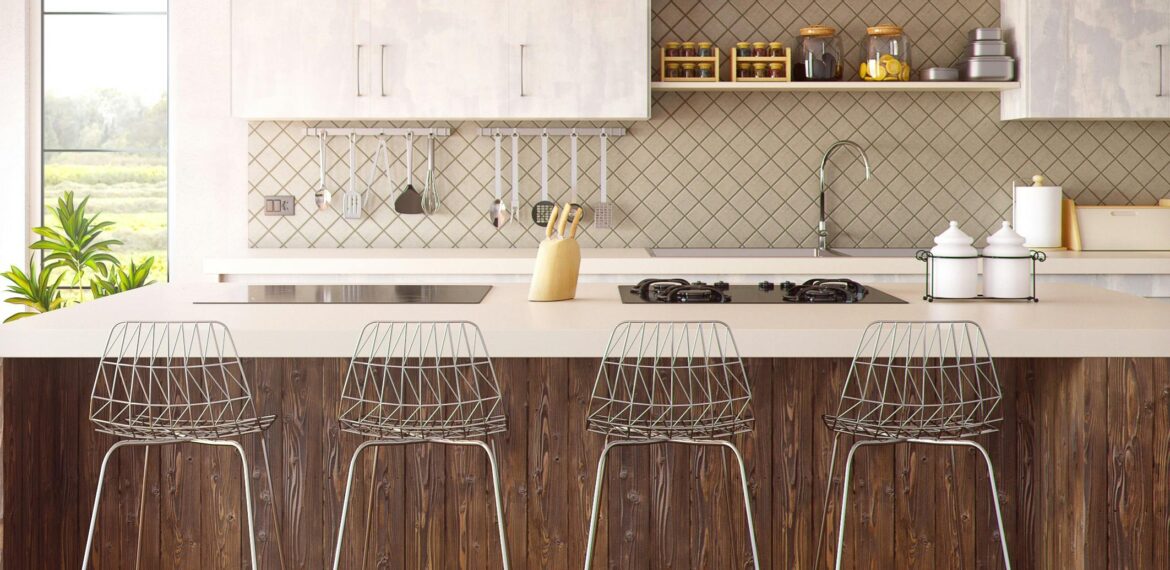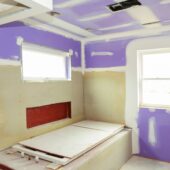Budgeting Tips for Home and Room Additions Project
Planning home additions is an exciting yet complex process for many homeowners. Whether you’re expanding your living space to accommodate a growing family, adding a guest room, or creating a home office, there are many factors to consider—especially when it comes to budgeting. Without a well-organized financial plan, costs can quickly get out of control, turning your dream project into a stressful experience. Careful budgeting is vital to the success of any home addition. From estimating costs accurately to avoiding common financial pitfalls, having a clear strategy will help you manage the process smoothly. In this blog, learn the practical budgeting tips to guide you through the economic aspects of your home addition, ensuring that your project stays on track and within your budget while delivering the space you’ve envisioned.
Five Common Budgeting Mistakes in Room Additions
Room additions are a fantastic way to expand your home’s functionality and increase its value. However, budgeting for such a project can be tricky, and several common mistakes that homeowners make lead to unexpected costs and delays. Avoiding these pitfalls will ensure your project stays on track financially while delivering the desired results.
1. Underestimating the Total Costs
One of the biggest mistakes homeowners make when planning room additions is underestimating the project’s total cost. Focusing only on major elements like construction, materials, and labor is easy. Still, often, people forget to account for other expenses such as permits, utility upgrades, and necessary home repairs. Also, features like custom cabinets or specialized finishes can quickly push the budget beyond the original plan. Consider every aspect of the project and get detailed estimates to avoid surprises.
2. Ignoring Structural or Hidden Issues
Uncovering hidden issues in your home, such as foundation problems, electrical updates, or plumbing repairs, is common during a room addition. Failing to account for these potential issues in your budget can cause major financial stress. Structural repairs or upgrades are often required to ensure the safety and functionality of your new space. Ignoring these possible expenses when budgeting leads to last-minute panic and potential compromises in your project’s quality. Always plan for unexpected issues to avoid derailing your budget.
3. Not Allocating a Contingency Fund
Even with meticulous planning, unexpected costs can arise in any room addition project. Failing to allocate a contingency fund is a budgeting mistake that can leave homeowners scrambling to find extra funds. A good rule of thumb is to set aside 10-20% of your total budget for unforeseen expenses, whether it’s additional home repairs, material price fluctuations, or last-minute changes in design. Without this cushion, even small, unexpected expenses can cause financial strain.
4. Overlooking Material Costs
Another common mistake is not fully accounting for material costs, particularly if you plan to use premium materials for cabinets, flooring, or countertops. Homeowners may assume that standard options will fit their budget, but once they start choosing materials, they often realize that the price can significantly increase, especially with custom finishes or high-end features. Getting detailed quotes for the materials you want is essential so you’re not caught off guard when the final bill arrives.
4. Changing Plans Mid-Project
Making changes to the design or scope of work after the project has started is one of the costliest mistakes in room additions. Whether you upgrade to custom cabinets or change the layout, these adjustments often lead to increased labor, material, and even permit costs. While it’s tempting to make improvements during construction, it’s critical to stick to your original budget and plans to avoid unnecessary financial burdens. Any change mid-project should be carefully evaluated for its impact on your budget.
Avoiding Mistakes for a Successful Room Addition
By avoiding these common budgeting mistakes, you can ensure that your room addition project remains financially manageable and stress-free. Proper planning, accounting for all costs—especially hidden repairs and material upgrades like cabinets—and sticking to your initial plans will allow you to complete your project without breaking the bank.

Creating a Budget for Home Additions
Planning home or room additions can be an exciting step toward making your living space more functional and comfortable. However, setting a realistic budget before diving into the project is crucial. Whether adding an extra room, upgrading your kitchen, or making structural changes, staying on top of your finances will help prevent unexpected costs. Every detail requires careful planning, from the initial design to selecting materials such as cabinets and completing necessary home repairs. Let’s look at some essential tips and strategies to help you create a solid budget for your home addition project.
Assessing the Scope of Your Project
The first step in creating a budget for home or room additions is to assess your project’s scope thoroughly. This first step involves understanding the size and complexity of the work. Identifying the overall requirements of your project will help you estimate costs more accurately. It’s also essential to consider materials, whether adding and customizing cabinets, upgrading flooring, or making other significant changes. Each element impacts your budget, so having a clear scope will help you stay on track.
Getting Accurate Cost Estimates
Once you have a clear idea of your project, the next step is to get accurate cost estimates. Begin by consulting professionals who can give you a realistic breakdown of expenses for materials, labor, and any additional home repairs necessary during construction. Don’t forget to consider features like new cabinets, which can vary significantly in price depending on your preferences. Whether you’re going for custom cabinetry or stock options, these costs can add up, so getting detailed quotes early on will help you set an appropriate budget.
Prioritizing Your Needs and Wants
When budgeting for home and room additions, it’s important to differentiate between your needs and wants. Focus on the essential elements of the project, such as foundational work, structural adjustments, and home repairs. After addressing these, you can allocate funds toward upgrades like high-end cabinets or premium finishes. Keeping a clear distinction between necessities and extras allows you to stay flexible in your budget without sacrificing necessary parts of your home addition.
Factoring in Contingency Costs
No home addition or renovation project goes exactly as planned, and unexpected costs can sometimes arise. Setting aside a contingency fund, typically around 10-20% of your total budget, is important to cover unanticipated expenses like additional home repairs or price fluctuations in materials such as cabinets or flooring. By factoring in a contingency, you’ll be better prepared to handle surprises without throwing your budget off course.
Monitoring Your Spending Throughout the Project
Even with a solid budget, monitoring your spending throughout the entire home addition process is crucial. Regularly reviewing costs will allow you to adjust as needed and ensure you’re not exceeding your financial limits. For example, if costs increase in one area, like custom cabinets, you might need to scale back on another aspect to stay within your budget. By staying involved and closely monitoring expenses, you can maintain control of your project and avoid unnecessary financial strain.
Budgeting Ensures a Smooth Home Addition Experience
A budget for home and room additions is key to a successful project. A well-organized financial plan will keep your home addition on track, from accurately assessing the scope of work to getting cost estimates, managing priorities, and preparing for unexpected expenses. Taking the time to set a solid budget and closely monitoring your spending ensures that your project runs smoothly while delivering the upgrades, repairs, and features like cabinets that you’ve envisioned.
Collaborating With Wells Branch Remodeling for Home Additions
Home additions can be a significant investment, but they don’t have to break the bank. When planning an expansion, it’s crucial to partner with a reliable team that delivers quality work and helps you manage costs efficiently. Wells Branch Remodeling is known for its expertise in providing homeowners with affordable yet high-quality room additions. By working closely with you, they ensure that every aspect of the project is carefully planned to avoid unnecessary expenses. Whether you’re expanding your living space or making critical home repairs, Wells Branch Remodeling’s comprehensive approach helps you stay within budget without sacrificing the vision of your home.
Customizing Your Home Addition to Fit Your Budget
One of the key ways Wells Branch Remodeling helps you save on your home addition is by customizing the project to fit your financial needs. They begin by thoroughly assessing your goals and financial limits and then offering design and material options that align with your budget. For example, suppose you’re installing new cabinets in your room addition. In that case, they provide various choices, from cost-effective stock cabinetry to custom designs, allowing you to choose based on style and price. This flexibility ensures that you get the look you want while controlling costs.
Preventing Hidden Costs and Surprises
Unexpected costs are a common issue in home additions, often due to overlooked home repairs or structural upgrades that need to be addressed. Wells Branch Remodeling’s attention to detail helps avoid these hidden costs. By thoroughly inspecting your existing structure before the project begins, they identify any potential problems early on, allowing you to plan for necessary repairs upfront. This proactive approach saves you from costly surprises and ensures your room addition project runs smoothly.
Efficient Project Management to Reduce Labor Costs
Another way Wells Branch Remodeling helps you save money on your home addition is through efficient project management. Their team of experienced professionals ensures that the entire process—from initial design to construction—runs on schedule and within the planned budget. Delays and miscommunications often lead to extended labor costs, but Wells Branch Remodeling’s organized workflow prevents such issues. Their ability to manage time effectively keeps the project moving forward without unnecessary hold-ups, saving time and money.
Prioritizing Quality Materials at Affordable Prices
While many homeowners fear that budget constraints will lead to compromising on quality, Wells Branch Remodeling has established relationships with suppliers that offer high-quality materials at competitive prices. Whether you’re selecting cabinets, flooring, or other essential materials for your home addition, they work to secure the best deals, ensuring that you get durable, aesthetically pleasing options without exceeding your budget. Their access to affordable yet premium materials allows you to enjoy the benefits of a stylish and long-lasting home addition.
Wells Branch Remodeling Ensures Affordable, High-Quality Home Additions
By collaborating with Wells Branch Remodeling, homeowners can achieve their home addition goals while staying within budget. Their commitment to transparent pricing, efficient project management, and customizable options for materials like cabinets and other features ensures that your home addition is affordable and high-quality. The team’s attention to detail and proactive approach help avoid costly surprises, making them a reliable partner in creating your ideal space.
Check out Wells Branch Remodeling’s blog for more insights and expert tips on managing costs for home additions.





